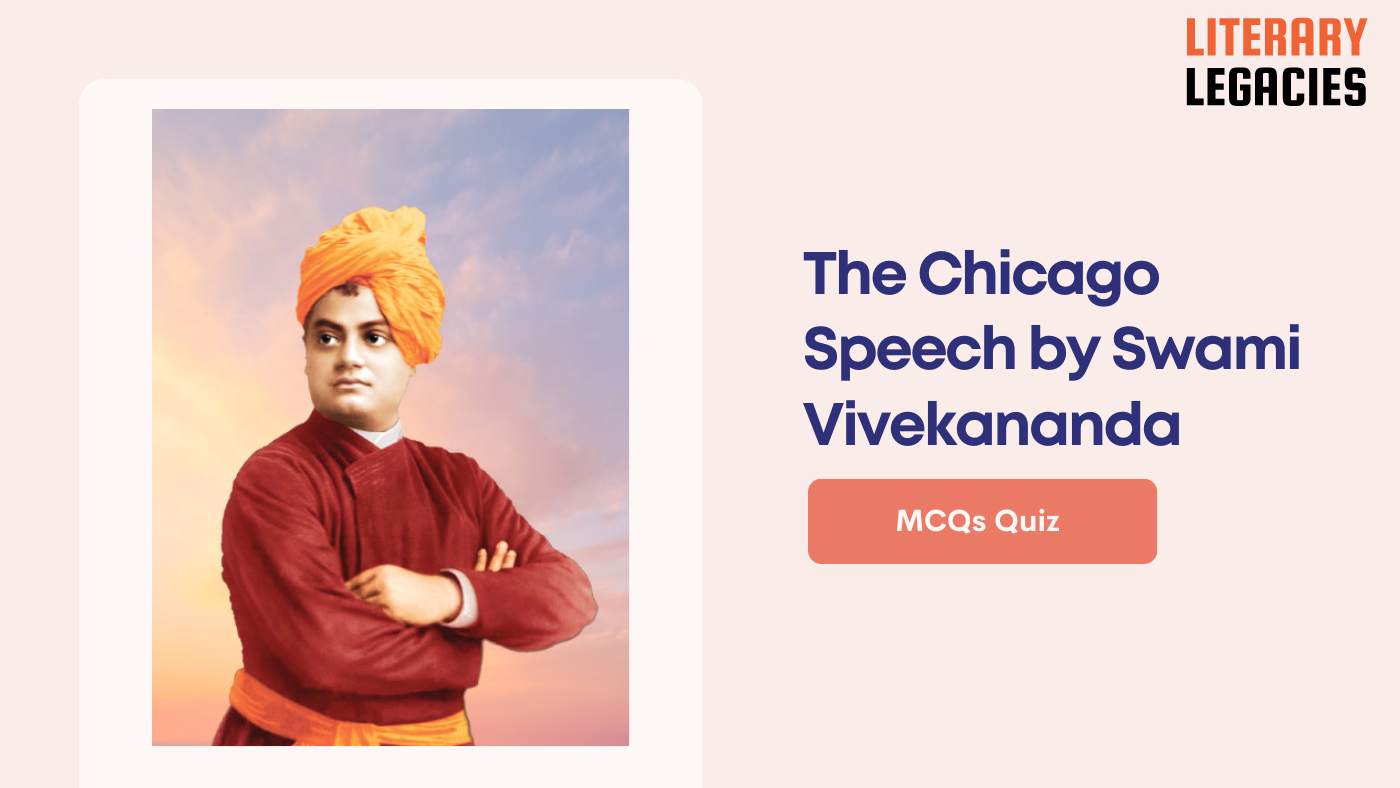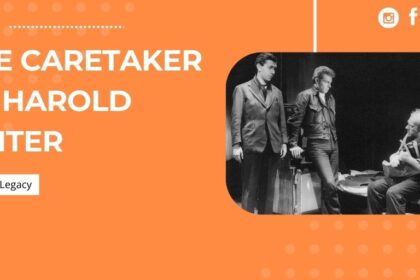1. What was Swami Vivekananda’s endeavour related to Indian innate values of religion and Western materialistic advancement?
A. To contrast
B. To separate
C. To unite
D. To compare
Answer: To unite (C)
Swami Vivekananda wanted to unite the Indian innate values of religion with Western materialistic advancement.
2. Where was the World Parliament of Religion held in 1893?
A. Washington D.C.
B. New York
C. Los Angeles
D. Chicago
Answer: Chicago (D)
The World Parliament of Religion was held in Chicago in 1893.
3. What was the event in 1893 that Swami Vivekananda represented Bharat at?
A. The Global Summit of Spiritual Leaders
B. The World Conference of Religions
C. The World Parliament of Religion
D. The International Assembly of Religions
Answer: The World Parliament of Religion (C)
Swami Vivekananda represented Bharat at the World Parliament of Religion in 1893.
4. What was special about Swami Vivekananda’s speech at the World Parliament of Religion?
A. He was the last speaker
B. He did not prepare a speech
C. He spoke in the morning
D. He was the first speaker
Answer: He did not prepare a speech (B)
Swami Vivekananda did not prepare a speech before speaking at the World Parliament of Religion.
5. How did Swami Vivekananda address the audience at the World Parliament of Religion?
A. Dear friends and family
B. Respected elders
C. Sisters and Brothers of America
D. Honourable guests
Answer: Sisters and Brothers of America (C)
Swami Vivekananda addressed the audience as ‘Sisters and Brothers of America’.
6. In what year did the first session of the World Parliament of Religion take place?
A. 1892
B. 1893
C. 1895
D. 1894
Answer: 1893 (B)
The first session of the World Parliament of Religion took place in 1893.
7. Where was the first session of the World Parliament of Religion held?
A. The Art Gallery
B. The Museum
C. The Convention Centre
D. The Art Institute
Answer: The Art Institute (D)
The first session of the World Parliament of Religion was held in the Hall of The Art Institute.
8. What did Swami Vivekananda thank in his speech?
A. The organizers
B. The name of ancient monks in the world, mother of all religions and millions of Hindus of all classes and sects
C. The audience
D. The government
Answer: The name of ancient monks in the world, mother of all religions and millions of Hindus of all classes and sects (B)
Swami Vivekananda thanked ‘the name of ancient monks in the world, mother of all religions and millions of Hindus of all classes and sects’ in his speech.
9. What did Swami Vivekananda feel proud to belong to?
A. A religion that teaches intolerance
B. A religion that teaches tolerance and universal acceptance
C. A religion that is widely followed in the West
D. A religion that is limited to India
Answer: A religion that teaches tolerance and universal acceptance (B)
Swami Vivekananda felt proud to belong to a religion that teaches tolerance and universal acceptance.
10. What did Swami Vivekananda represent at the World Parliament of Religion?
A. Jainism
B. Buddhism
C. Hinduism as a Hindu Monk
D. Christianity
Answer: Hinduism as a Hindu Monk (C)
Swami Vivekananda represented Bharat as a Hindu Monk at the World Parliament of Religion.
11. What did Swami Vivekananda compare all religions to?
A. Rivers flowing into the ocean
B. Trees growing in a forest
C. Flowers blooming in a garden
D. Droplets of water merging into the sea
Answer: Droplets of water merging into the sea (D)
This analogy highlights the diversity and unity of different religions.
12. What was the main idea behind the story of the frog in the well?
A. To show the limitations of one’s perspective
B. To demonstrate the power of imagination
C. To illustrate the importance of exploration
D. To emphasize the need for tolerance
Answer: To show the limitations of one’s perspective (A)
The story is used to convey the idea that one’s perspective can be limited by their environment.
13. What did Swami Vivekananda express gratitude towards America for?
A. Initiating a war against religious fanatics
B. Hosting an event that broke barriers between different worlds
C. Establishing a new religion
D. Discovering a new continent
Answer: Hosting an event that broke barriers between different worlds (B)
Swami Vivekananda was thankful for the event that brought together people from different backgrounds.
14. What does religion bind humans with, according to Swami Vivekananda?
A. Dissimilarities
B. Nationality
C. Cultural differences
D. Similar affinities
Answer: Similar affinities (D)
Religion binds people with similar affinities, but does not imply disrespect towards dissimilarities.
15. What is the primary goal of religious unity, according to Swami Vivekananda?
A. To preserve individuality
B. To impose one’s beliefs on others
C. To convert people to one’s own religion
D. To win arguments against others
Answer: To preserve individuality (A)
Swami Vivekananda emphasized the importance of preserving individuality in the pursuit of religious unity.
16. What has Swami Vivekananda’s nation sheltered, according to him?
A. Only the persecuted and refugees of his own religion
B. Only the Israelites
C. Only the followers of Zoroastrians
D. The persecuted and refugees of all religions and nations
Answer: The persecuted and refugees of all religions and nations (D)
Swami Vivekananda’s nation has sheltered the persecuted and refugees of all religions and nations.
17. What did Swami Vivekananda attribute to the slow progress of human society?
A. The absence of religious unity
B. The lack of tolerance and universal acceptance
C. The prevalence of violence
D. Sectarianism, bigotry, and fanaticism
Answer: Sectarianism, bigotry, and fanaticism (D)
Swami Vivekananda believed that sectarianism, bigotry, and fanaticism have hindered the progress of human society.
18. What did Swami Vivekananda conclude his address with?
A. A plea for harmony and peace
B. A warning against fanaticism
C. A statement of superiority
D. A call to fight against other religions
Answer: A plea for harmony and peace (A)
Swami Vivekananda concluded his address with a call for harmony and peace.
19. What did Swami Vivekananda say is the primary role of religion?
A. To convert people to one’s own religion
B. To establish a universal religion
C. To promote conflict and violence
D. To help and not fight
Answer: To help and not fight (D)
Swami Vivekananda believed that the primary role of religion is to help and not fight.
20. What did Swami Vivekananda say about the Israelites?
A. They were followers of his religion
B. They were sheltered by his nation
C. They were persecuted by the Romans
D. They were a grand Zoroastrian nation
Answer: They were sheltered by his nation (B)
Swami Vivekananda mentioned that his nation had sheltered the purest remnant of the Israelites.
21. What is the primary objective of the Hindu religion?
A. To realize and become perfect, to reach God
B. To believe in a certain doctrine or dogma
C. To divide people into different castes
D. To engage in struggles and conflicts
Answer: To realize and become perfect, to reach God (A)
The Hindu religion focuses on realizing and becoming perfect, to reach God, rather than believing in a certain doctrine or dogma.
22. What does the Hindu philosophy aim to achieve?
A. To become perfect and see God
B. To acquire material wealth
C. To become rich and powerful
D. To conquer the world
Answer: To become perfect and see God (A)
The Hindu philosophy aims to become perfect and see God, which is the ultimate goal of the Hindu religion.
23. What is the ultimate goal of all sciences, according to the text?
A. To understand the law of association
B. To eradicate superstition and bigotry
C. To discover the one energy that all others are manifestations of
D. To create a perfect science of religion
Answer: To discover the one energy that all others are manifestations of (C)
The text states that the goal of all sciences is to discover one energy that all others are manifestations of.
24. Why do people use mental images and symbols when they pray, according to the text?
A. Because they are a manifestation of the divine
B. Because they are forced to do so
C. Because they are unable to think without them
D. Because they are a way to connect with the divine
Answer: Because they are unable to think without them (C)
The text explains that people use mental images and symbols when they pray because they are unable to think without them, due to the law of association.
25. What is the ultimate goal of science, according to the text?
A. To find unity
B. To discover new elements
C. To explore the universe
D. To invent new machines
Answer: To find unity (A)
The ultimate goal of science is to find unity, and once that is achieved, science would stop progressing.
26. What is the primary difference between the Hindu and Christian religions, according to the text?
A. The focus of their religion
B. The location of their churches
C. The number of idols they worship
D. The type of symbols they use
Answer: The focus of their religion (A)
The text states that while Christians focus on intellectual assent to certain doctrines and doing good to their fellows, the whole religion of the Hindu is centred in realisation.
27. What is the metaphor used to describe how a person should live in the world?
A. A bird in the sky
B. A fish in water
C. A tree on land
D. A lotus leaf in water
Answer: A lotus leaf in water (D)
The metaphor used is a lotus leaf that grows in water but is not moistened by it, illustrating how a person should live in the world.
28. What is the author’s attitude towards America?
A. Grateful
B. Angry
C. Critical
D. Indifferent
Answer: Grateful (A)
The author expresses gratitude towards America for attempting to break down barriers and unite people.
29. What is the main problem that the Hindus and Buddhists face, according to the text?
A. The lack of idols in their temples
B. The lack of unity among their followers
C. The separation between the two religions
D. The lack of philosophy in their religions
Answer: The separation between the two religions (C)
The text states that the separation between the Hindus and Buddhists is the cause of the downfall of India.
30. What is the central idea behind the little well analogy?
A. That America is the center of the world
B. That people should struggle to believe in a certain doctrine
C. That science is the only way to find truth
D. That each person has their own worldview
Answer: That each person has their own worldview (D)
The little well analogy illustrates how people tend to think their own worldview is the only one that exists, just like a frog in a well thinks the well is the whole world.
31. What does the author say is the most important thing for a starving man?
A. Bread
B. Idols
C. Religion
D. Metaphysics
Answer: Bread (A)
The text states that it is an insult to a starving man to teach him metaphysics, implying that the most important thing for him is bread.
32. What does the author suggest people should strive for?
A. Spiritual growth
B. Material wealth
C. Fame and recognition
D. Power and influence
Answer: Spiritual growth (A)
The author suggests that people should strive for spiritual growth and become perfect, just like the Father in Heaven is perfect.
33. What is the role of idols and temples in Hinduism, according to the text?
A. They are a means to an end
B. They are a way to connect with the divine
C. They are the central focus of the religion
D. They are the only way to realize the divine
Answer: They are a means to an end (A)
The text states that idols and temples are only the supports, the helps, of the Hindu’s spiritual childhood.
34. What is the relationship between science and unity, according to the text?
A. Science is a means to achieve unity
B. Science is the opposite of unity
C. Science is unrelated to unity
D. Science is the enemy of unity
Answer: Science is a means to achieve unity (A)
According to the text, science is a means to achieve unity, and once that unity is achieved, science would stop progressing.
35. What is the main aim of the Hindu monk, according to the text?
A. To realize the divine
B. To build more temples
C. To study the ceremonial part of Hinduism
D. To become the highest caste
Answer: To realize the divine (A)
The text states that the spiritual portion of Hinduism, which is studied by the monks, is specially focused on realizing the divine.
36. What is the result of the separation between the Hindus and Buddhists, according to the text?
A. The unity of all religions
B. The downfall of India
C. The destruction of Hinduism
D. The growth of Buddhism
Answer: The downfall of India (B)



